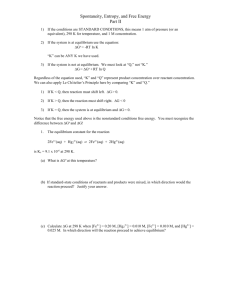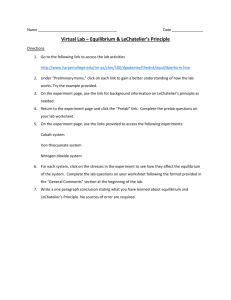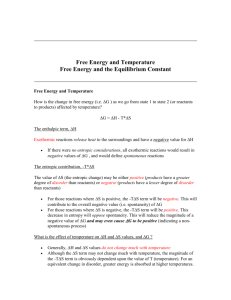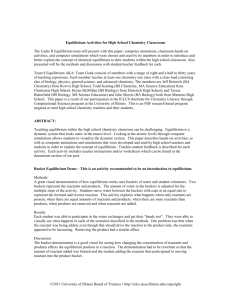Introduction
advertisement
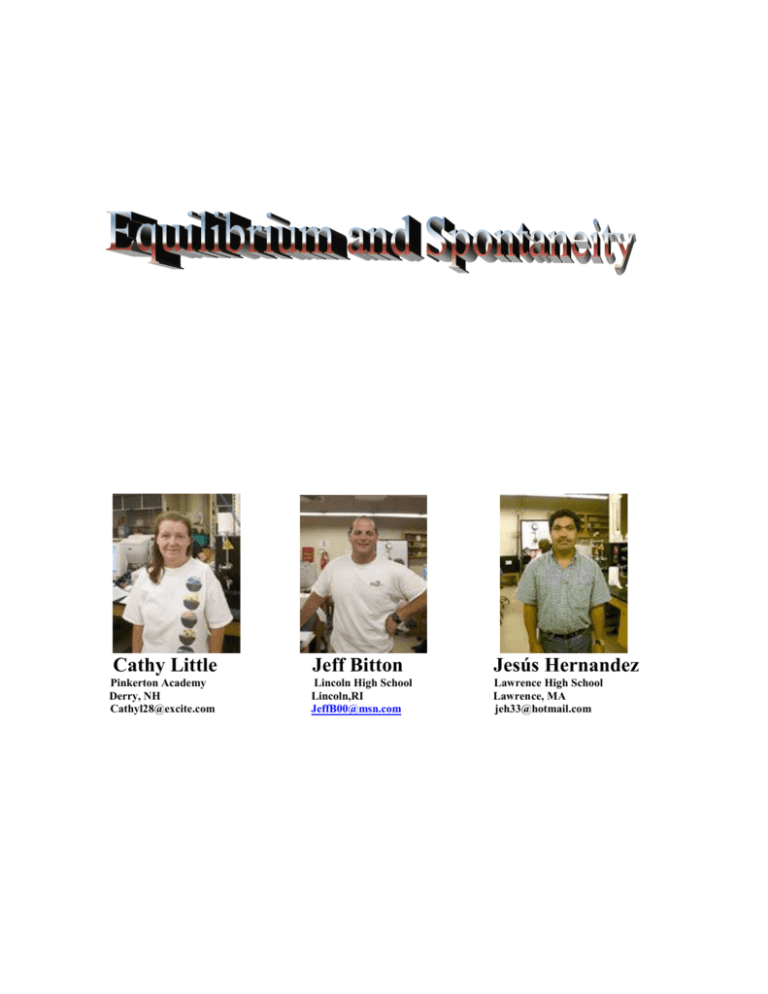
Cathy Little Pinkerton Academy Derry, NH Cathyl28@excite.com Jeff Bitton Jesús Hernandez Lincoln High School Lincoln,RI JeffB00@msn.com Lawrence High School Lawrence, MA jeh33@hotmail.com Introduction Topics include equilibrium, LeChatelier’s principle and its connection to spontaneous reactions, Gibbs free energy and other thermodynamics parameters. Allow teachers to help students visualize molecular motion of particles at equilibrium as a function of temperature. These topics explain why and if chemical reactions will occur spontaneously and what factors influence it. The unit ties together many important concepts in chemistry and physics. The use of simulations allows students to actually see the process. Also, the simulab allows students to complete investigations in a fraction of the time of a wet lab while freely changing parameters. Intended Audience Second-year honors chemistry Advanced Placement Chemistry Advanced Placement Physics B Visual learners This unit will enhance the ability of students to prepare for national and state exams, and college placement exams. The topics included in the unit are part of the science standards for many states. Adjustments/Adaptations This unit can be adapted for lower level students by de-emphasizing math and emphasizing concepts through a series of demonstrations including simulations. In the situation of computer scarcity, the simulation lab could be run by the instructor as a demonstration or the students may run simulation labs on a home computer. Placement in the Curriculum This unit is intended for second semester AP or Honors level students. Students should be familiar with thermochemistry, titrations, solution chemistry, stoichiometry and kinetics. Time/Instructional activities The unit will comprise approximately two weeks. Following is a suggested order of activities with approximate time considerations. Day One Students will complete as many equilibrium activities as time allows. Activities located in ( equilibriumactivities) Day Two Discussion of equilibrium activities of day one. General discussion of equilibrium and free energy. Notes in file ( Free energy notes) Day Three Prelaboratory discussion of Spontaneity lab. Begin preparing solutions for lab. Lab located in file (Spontaneity). Day Four Continue work on spontaneity lab. Day Five Complete work on spontaneity lab. Post lab discussion. Assignment of lab report due date. Day Six Perform and discuss LeChatelier’s principle demonstration of your choice (one is included in file LeChatelier’s). Introduce sim-lab software. Day Seven Students will perform equilibrium simulation lab following procedure in file (simulabprocedure) Day Eight Continue simulation lab. Day Nine Review of unit including homework assignments in preparation of unit exam. Day Ten Unit Exam Resources/electronic equipment See materials in files spontaneity, equilibrium activities and free energy notes At least one computer; preferably one computer for each lab group. Traditional text books covering topics. Traditional chemistry class room and lab with equipment and safety materials. Goals and Objectives Students will be able to determine relationships between equilibrium, thermodynamics and spontaneity. Enabling objectives: You will be able to: o Observe the effect of temperature change on the equilibrium according to LeChatelier’s principle. o Determine if the reaction is endothermic or exothermic. o Calculate the equilibrium constant at varying temperatures. o Plot LnK as a function of 1/T and determine the values of H0, S0 and G0. The VMDL program will provide insights into the molecular processes in a chemical reaction as it approaches equilibrium and as equilibrium is disturbed by temperature change. Assessments Wet laboratory Simulation lab Homework Unit Test Rubric for wet laboratory and simulation laboratory included in lab evaluation file. Homework and unit test assessed according to individual teacher’s procedure.

